STATEWIDE (May 12, 2022) — Last month, the Colorado Department of Public Health and Environment changed its method of reporting past cases to make it easier for third parties to accurately calculate and display Colorado’s current COVID-19 case rates. As part of this change, CDPHE announced it would release cases with report dates more than 30 days old in batches every two weeks. The department’s regular 4 p.m. data update on Thursday, May 12, 2022, will include a batch of previous cases, adding 7,810 cases to the state’s cumulative count with report dates from the winter omicron surge.
This reporting method ensures that only recent cases are added to the state’s cumulative case count daily. The state made this change in response to Colorado residents expressing continued frustration and confusion when comparing local reports with national ones, even though the source data is the same. CDPHE strongly recommends third parties who use cumulative case counts to calculate Colorado’s COVID-19 case rates exclude Thursday, May 12, 2022 from their calculations for moving averages. The majority of cases CDPHE will add to Colorado’s cumulative case count on Thursday, May 12 are not new cases and do not reflect an increase in transmission in Colorado.
In order to share the most accurate case data possible, CDPHE updates all COVID-19 case data, past and present, from the state’s reportable disease registry. CDPHE recommends that the best practice for analyzing COVID-19 case data over time is to pull updated data for Colorado’s full time series. Updated time series are published on CDPHE’s Open Data Portal.
“We made this change in reporting last month to help third parties more accurately report Colorado’s current COVID-19 data,” said Dr. Rachel Herlihy, State Epidemiologist. “We are hopeful that this communication regarding our bi-weekly release of cases from the winter omicron surge will provide an opportunity to see how these batches are released and presented on Colorado’s COVID-19 data dashboard. Third parties can exclude these bi-weekly batches of past cases to give people the most accurate information about the current state of COVID-19 in Colorado.”
The most accurate source for Colorado data related to the pandemic remains CDPHE’s dashboard located at covid19.colorado.gov/data.
Blog
-
CDPHE to release a batch of past cases from the winter omicron surge
-
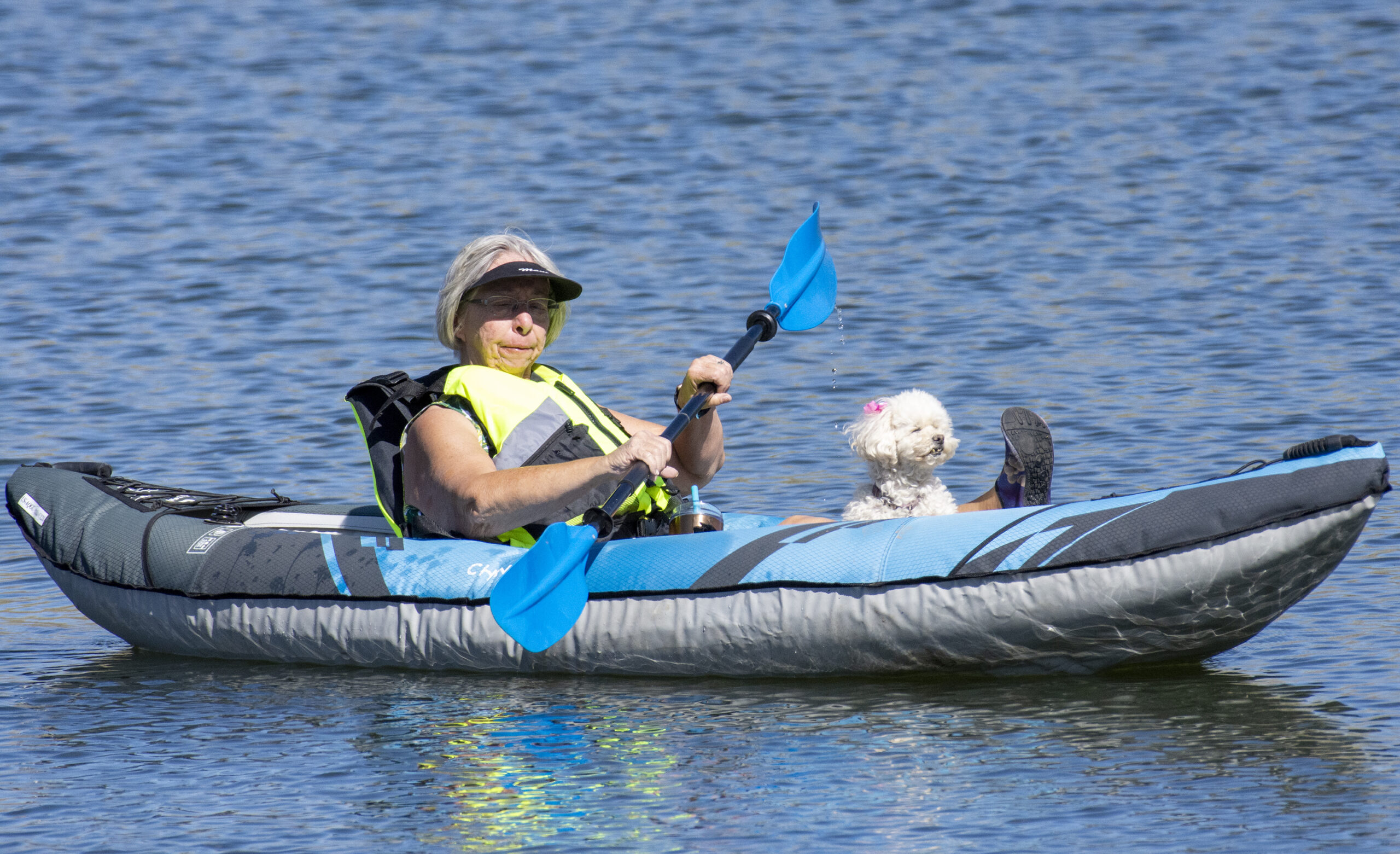
CPW reminds boaters, paddlers to be cautious in windy conditions and to know the dangers of cold water
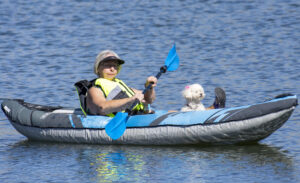
A woman sets off on her water outing Friday at Chatfield State Park, wisely with a life jacket on.
DENVER – As Colorado’s weather starts to warm and paddle sport enthusiasts come out of hibernation, Colorado Parks and Wildlife would like to remind them to be careful of the windy and cold water conditions.
The best safety precaution one can take is to wear a life jacket at all times while out on the water.
“We see a large increase in requests for help from kayakers and stand-up paddleboarders during windy conditions,” said Kris Wahlers, Park Manager at Chatfield State Park. “It’s not unusual for paddlers to plan to stay close to shore, but get blown across the lake or into spots difficult to get out of when wind comes up.”
Getting blown off course can happen very quickly and is difficult to return from because of a headwind and waves. People use a lot of energy paddling and maintaining balance making it harder to paddle in those conditions.
What’s worse, it is easy to lose your balance and get separated from your paddleboard or kayak in windy conditions. It’s best to avoid being in those conditions from the get-go, and that plays into the responsibility of the user to know before you go.
Check the weather report before you come to the lake and watch the conditions while you are there.
“Wind typically moves in from the west in the early afternoon, pay close attention to that direction and time to avoid being caught unaware,” Wahlers added. “If you do get caught, it’s best to wait for conditions to improve or to walk along the shoreline if possible. Anytime you’re paddling, the easiest way to stay safe is to wear your life jacket.”
Power boaters need to be aware as well.
“It’s generally easier for power boats in windy conditions while everything is in good working order,” Wahlers said. “If they lose power, that can change very quickly.”
Boaters are asked to make sure their boat is in good working order, bring plenty of fuel, an anchor if they need to keep from moving during a power loss and a paddle if they need to move. A good rule of thumb for anchoring is to have three times more rope than the water is deep, so 150 feet of rope in 50 feet of water. Not having enough rope doesn’t allow the anchor to set well and it could work itself out.
Take precautions to protect yourself from the heightened dangers of sudden, unexpected cold water immersion while on early and late season boating outings, especially on small boats.
“Anglers, swimmers, paddlers and all boaters must be aware of the risks of cold water,” Wahlers said. “Paddlers and any boater on the water can take precautions and prevent being suddenly thrown overboard, swamped or stranded in cold water.”
Sudden immersion in cold water can cause gasping and inhalation of water and hypothermia, resulting in unconsciousness or swimming failure as muscles become numb. Wearing a life jacket will keep your head above water and support your body should your swimming ability fail or you become unconscious.
CPW officers have noticed a lot of people overestimate their ability to ‘swim out of a problem.’ Because of this, CPW recommends anyone out on the water wear a life jacket. -

9.5% Of the Colorado Population Is Foreign-Born, Below U.S. Average
With a foreign-born population of more than 44 million, the U.S. has the largest number of immigrants in the world. In fact, research from the Pew Research Center shows that the U.S. immigrant population accounts for one-fifth of the world’s migrants. While U.S. immigrants come from almost every country in the world, Mexico is the most common country of origin for the foreign-born population.
From the period of 1850 to 2020, when the most recent data is available, the foreign-born population share hit a high of 14.8% in 1900. From 1920 to 1980, the share of immigrants fell, dropping to a low of 4.7% in 1980. Until recently, the immigrant share of the population had been climbing and was at a near historic high in 2019 before the pandemic. The share of immigrants dropped slightly in 2020 to 13.5%, down from the 13.7% it had stood at for the last several years.

Accounting for 24.8% of the foreign-born population, Mexico claims the largest number of U.S. immigrants. The Chinese and Indian immigrant populations are also large, making up a collective 12.2% of the foreign-born population. Pew Research Center analysis of Census Bureau data shows that about one million immigrants arrive in the U.S. each year, and the most common region for new immigrants is now Asia, which recently surpassed Hispanic countries.

While immigrants live in every U.S. state, some parts of the country have larger foreign-born populations than others. Over one-fourth of California’s population is foreign-born—mostly coming from Mexico—making California the top state for immigrants. New Jersey and New York also have large immigrant populations, with 22.7% and 22.4% of their populations being immigrants, respectively. Alternatively, Montana and West Virginia have very small immigrant populations, accounting for just 2.2% and 1.6% of their populations, respectively.

To determine the U.S. states with the largest immigrant populations, researchers at BackgroundChecks.org analyzed the latest data from the U.S. Census Bureau. The researchers ranked states according to the foreign-born population share. Researchers also calculated the most common country of origin, the total foreign-born population, and the total population.
The analysis found that immigrants account for 9.5% of the Colorado population, compared to 13.5% nationally. Here is a summary of the data for Colorado:
- Foreign-born population share: 9.5%
- Most common country of origin: Mexico
- Total foreign-born population: 539,514
- Total population: 5,684,926
For reference, here are the statistics for the entire United States:
- Foreign-born population share: 13.5%
- Most common country of origin: Mexico
- Total foreign-born population: 44,125,628
- Total population: 326,569,308
For more information, a detailed methodology, and complete results, you can find the original report on BackgroundChecks.org’s website: https://backgroundchecks.org/cities-largest-immigrant-population.html
-

CPW presents results of mandatory testing for chronic wasting disease at May Commission Meeting in Sterling
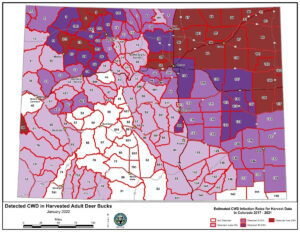
Map of CWD infection rates in harvested adult male deer in Colorado, 2017-2021.
STERLING, Colo. – At the May CPW Commission meeting in Sterling, CPW Terrestrial Programs Supervisor Matt Eckert provided an update to the Commission on the agency’s chronic wasting disease (CWD) testing efforts. Eckert summarized the agency’s findings from mandatory CWD testing for the 2021-2022 hunting season as well as lessons learned over the first five-year rotation of mandatory testing (2017-2021 hunting seasons).
From 2017-2020, CPW focused mandatory testing on deer because deer have the highest disease infection rates and greatest need for disease management. During this time, CPW examined CWD levels across all 54 deer herds. CPW focused on elk in 2021, which provided the first reliable infection rate estimates for elk since the mid-2000s. In 2022, CPW will restart the five-year rotation, shifting its attention back to deer.
A variety of management methods have already been utilized around the state since mandatory testing began. When infection rates are greater than 5%, wildlife managers have utilized tactics such as:- Reducing population or density
- Reducing male/female ratio (males tend to have double the infection rates of females)
- Changing the age structure (4- to 6-year-old bucks tend to have the highest infection rates)
Resulting data will continue to inform the management actions CPW takes to lower disease infection rates.
“Overall, the decision to commit to annual mandatory testing has been resoundingly important to understanding the status of this disease in Colorado,” Eckert said. “It’s helped us in acquiring and communicating reliable infection rate estimates and laying a foundation to assess herd-specific management actions to combat CWD. We are now taking management actions in 27 of our 54 deer herds.”
2021 Mandatory CWD Testing Summary
Map of CWD infection rates in harvested adult and yearling elk in Colorado, 2017-2021.
In 2021, CPW tested its 14 highest priority elk herds, with special emphasis on those that overlap high-prevalence mule deer herds. Eckert said the testing helped CPW learn that:
- CWD in elk is still relatively low in elk herds statewide.
- Detection of infected yearling elk is higher than expected.
- Geographic patterns of high infection level areas generally overlap for elk and deer.
“Not only were we interested in generating reliable estimates of CWD infection rates in elk, but we also wanted to analyze relationships of CWD infection rates among mule deer and elk harvested in the same areas,” Eckert said. “If management actions prescribed in our most infected deer herds successfully maintain or reduce CWD, those same actions taken for deer may also affect CWD infection rates in elk over time.
“We would not be able to determine this relationship and response to disease management efforts in deer without knowing the infection rates in both deer and elk in overlapping herds,” Eckert said. “Additionally, we retested six mule deer herds to increase the number of harvest submissions used to estimate infection rates in those herds.”
Read the complete CWD update to the Commission here.
What is CPW doing to address CWD?
CPW is working to ensure the long-term health of deer, elk and moose herds. Over time, this means minimizing the number of animals that get infected and die from this disease. To date, management actions have been prescribed for 27 deer herds that intend to reduce infection levels to below 5%. More information about our plan to manage CWD is available in the Colorado Chronic Wasting Disease Response Plan.
The CWD Response Plan establishes a compulsory management threshold, which means when infection rates exceed 5% in adult (older than 2 years) male deer, then some form of management actions will be taken to reduce infection rates until they fall below the 5% threshold. CPW identifies various management actions in the plan that are available to local managers to prescribe in herd management efforts, all of which have the potential to help reduce infection rates in deer herds.
What are the health risks to humans?
CWD is a prion disease that affects Colorado’s deer, elk and moose. The disease course generally lasts 2 – 3 years in deer and is always fatal. Although there has been no evidence that CWD has transmitted to a human, the Center for Disease Control, CPW and the Colorado Department of Public Health & Environment all recommend that hunters not eat the meat of a CWD-infected animal.
More information about CWD is available on CPW’s website.
More information on prion diseases is available on CDPHE’s website. -

Colorado Parks and Wildlife partners with Youth Corps Association to fund $398 thousand in OHV trail maintenance projects
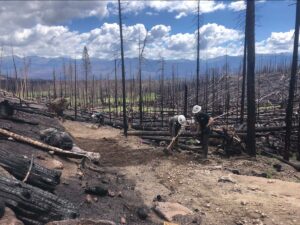
CPW and CYCA share a goal – to inspire people to connect with the outdoors while learning how to balance outdoor recreation with mindful conservation.
DENVER – Colorado Parks and Wildlife is partnering with the Colorado Youth Corps Association (CYCA) to hire 41 weeks of service corps this summer to repair off-highway vehicle (OHV) trails impacted by increased visitation and wildfire damage.
Colorado’s outdoors continue to see an increased demand for outdoor recreation and wildfires that pose challenges to Colorado’s trail network. Increased trail use can lead to more rapid trail erosion and heavily burned wildfire areas can shift the connectivity of some trails due to postburn hot spots in forest areas.
“As we monitor how human use and natural disasters impact our outdoor spaces, we are dedicated to protecting our trails so they can be enjoyed for years to come,” said CPW’s State Trails Program Manager Fletcher Jacobs. “CPW is fortunate to partner with so many wonderful organizations that share our passion to connect people to Colorado’s outdoors through educational experiences. We value our collaboration with CYCA because it allows us to work with our local outdoor communities at a grassroots level, and get our hands dirty together to rebuild recreational areas that bring people joy.”
CPW and CYCA share an organizational goal – to inspire young people to connect with the outdoors while learning how to balance outdoor recreation with mindful conservation. This partnership demonstrates the commitment of both entities to work together towards a mutually beneficial stewardship strategy.
While Colorado’s OHV recreators already play a critical role in sustaining motorized trails for the state by annually funding over $5 million in trail improvements, these projects give interested youth and young adults the opportunity to contribute to trail maintenance in a tangible way.
“Spending time in nature helps teach us, inspires us and nourishes our bodies and minds,” said CYCA’s Executive Director Scott Segerstrom. “Working together with CPW on these trail projects is a wonderful way to empower our corps members and demonstrate that they can make a significant difference to help conserve our public lands. Through experiential learning, our corps members are gaining knowledge on how they can transform landscapes and give back to their community.”
CPW staff and CYCA-accredited conservation service corps will be working on the following motorized trail maintenance projects this year:
Grand Lake-Williams Fork Fire Rehab
Rehabilitation and reconstruction of Williams Fork/Keyser Creek and Grand Lake Trail Systems, including signage, kiosks, resource protection fencing, trail structures and routes. The estimated quantity of open OHV trails and roads affected by wildfire in the two areas is over 200 miles and includes more than 32 trail bridges.Rainbow Trail Maintenance
The primary purpose will be to reroute seven miles of this multi-use single-track trail. This section of the Rainbow Trail has been closed since 2016, so work will be done to restore the trail’s continuity and access to public lands. The secondary purpose of this project is to mitigate safety threats created by trail damage and hazard trees, particularly in the Hayden Pass burn area.Killpecker/Swampcreek 2022 Trail Project
Post Cameron Peak Fire, Canyon Lakes RD plans to reopen motorized use to both trails as soon as possible. The Swampcreek Trail needs a saw crew to remove dead and down trees after the Cameron Peak Fire and remove any potential tree hazards. The Killpecker Trail needs a specialty crew to install size-restricted “V-Gates” on trail access points to limit unauthorized users onto single-track trails.Red Mountain Gulch Day Use Area
This popular site along the Alpine Loop is almost predominantly used by OHV enthusiasts. Work to be completed by a hybrid crew includes wildfire mitigation work, piling of small aspen growth and brush for pick-up by Hinsdale County Road & Bridge Department for relocation to debris pile, reduction of overgrowth, painting of vault toilet and picnic tables and pavilion, installation of new signs, reinstallation of parking beams, reestablishment of picnic sites and trail work.OHV Trail Maintenance on CPRD
The Forest Service Recreation crew will survey the trails to be maintained, and work alongside the Youth Crew. The goal of the project is to take care of deferred maintenance that accumulates on 56 miles of single-track trails. The work will include trail clearing (tree removal), drainage and tread work, corridor cleaning and trailhead improvement.Penrose Commons Trail Maintenance
The work will improve the condition of the routes and add approximately 1,000 feet of fencing in key locations where trail widening is occurring to encourage riders to stay on the trail. Maintenance would be completed on multiple segments along the trail system, consisting of backslope issues, fixing trail grade, repairing drains, removing debris and trimming trail corridors.Basalt to Gypsum Youth Corp Grant
The Basalt to Gypsum trail system is growing in popularity. The incised tread is no longer supporting the heavier impact. Providing proper drainage on the trails would help bring this motorized system closer to being sustainable. The trails need backlogged maintenance focusing on clearing and constructing drainage structures, tread work, corridor clearing, maintenance and sight clearing.In addition to these seven trail maintenance projects, CPW has reallocated six weeks of crew funding to complete the Alpine Loop project that was awarded last year but not completed.
Alpine Loop Backcountry Byway
The Bureau of Land Management (BLM) will install signage and metal fire rings at approximately 200 dispersed campsites along the Alpine Loop. All campsites are accessible by motorized vehicles and OHVs. Crews will have two main tasks: to remove all rock fire rings in the project area and install the new fire rings and site posts within designated sites. In some cases, BLM will work with crews to limit and contain vehicle impacts with placement of worm fences and log barriers.For more information on CPW’s Trails Program, visit https://cpw.state.co.us/.

-
Rescue teams recover body of suspected drowning victim at Cherry Creek State Park on Saturday
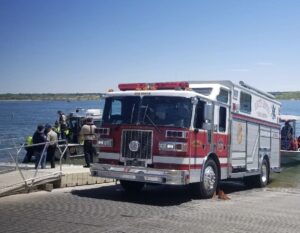
Photo courtesy of CPW
AURORA, Colo. – Colorado Parks and Wildlife and South Metro Fire Rescue crews located and recovered the body of the suspected 29-year-old male victim missing in the reservoir at Cherry Creek State Park since Saturday, May 7.
The victim was discovered at 11:11 a.m. on Saturday, May 14, on the bottom of the reservoir using a Marine Sonic Technology tow-fish sonar device, towed underwater just feet above the lake bottom. After the sonar identification of the suspected target, CPW’s Marine Evidence Recovery Team (MERT) members deployed a ROV (remotely operated vehicle) to get a video confirmation.
The victim was brought to the surface where a South Metro dive team turned the victim over to the Arapahoe County Coroner.
“Everybody involved didn’t give up, no matter what the circumstances were and this is a great result of that,” said Jason Trujillo, Cherry Creek State Park Manager. “We offer our deepest condolences and hope that this recovery will bring a little comfort to the family and friends as they mourn the loss of their loved one.”
A number of agencies played a hand in this colossal recovery effort that lasted seven days. Rescue crews participating the operation included South Metro Fire Rescue, the Summit County Sheriff’s Office, CPW’s MERT Team and Park Rangers, the Arapahoe County Sheriff’s Office, the American Red Cross, Search and Rescue Dogs of the United States and two fishing guides from Tightline Outdoors who volunteered to help with the search by running their own sonar units. All parties came together to recover the victim and bring him back to the family.
The Arapahoe County Coroner will determine a cause of death and make identification of the victim.
“In a situation like this, our No. 1 priority is to bring the victim back to the family,” said Jim Hawkins, leader of CPW’s MERT Team. “It is the families that keep us going during these recovery operations. This is very technical work that requires skill and experience. Not every recovery is the same and these searches are dynamic, but a well coordinated team effort among all agencies led to the recovery.”
On Saturday, May 7 at approximately 6:45 p.m. is when the victim went missing in the water after being separated from an inner-tube he was being towed on behind a boat. Water temperatures ranged between 56-60 degrees that day.
The victim was reportedly not wearing a life jacket.
This is the second drowning in Colorado this year. The first was a 24-year-old male on Jan. 26 at Chipeta Lake south of Montrose. In 2021 there were 22 total drownings in Colorado, which was down from the 34 drownings in 2020. That 2020 figure is the highest number of drownings on record in the state.
“We are also very thankful to the public for their patience while we resolved this matter,” Trujillo added, acknowledging the closure of the reservoir to boating for five days of this search.
 Photo courtesy of CPW
Photo courtesy of CPWAURORA, Colo. – Colorado Parks and Wildlife and South Metro Fire Rescue crews located and recovered the body of the suspected 29-year-old male victim missing in the reservoir at Cherry Creek State Park since Saturday, May 7.
The victim was discovered at 11:11 a.m. on Saturday, May 14, on the bottom of the reservoir using a Marine Sonic Technology tow-fish sonar device, towed underwater just feet above the lake bottom. After the sonar identification of the suspected target, CPW’s Marine Evidence Recovery Team (MERT) members deployed a ROV (remotely operated vehicle) to get a video confirmation.
The victim was brought to the surface where a South Metro dive team turned the victim over to the Arapahoe County Coroner.
“Everybody involved didn’t give up, no matter what the circumstances were and this is a great result of that,” said Jason Trujillo, Cherry Creek State Park Manager. “We offer our deepest condolences and hope that this recovery will bring a little comfort to the family and friends as they mourn the loss of their loved one.”
A number of agencies played a hand in this colossal recovery effort that lasted seven days. Rescue crews participating the operation included South Metro Fire Rescue, the Summit County Sheriff’s Office, CPW’s MERT Team and Park Rangers, the Arapahoe County Sheriff’s Office, the American Red Cross, Search and Rescue Dogs of the United States and two fishing guides from Tightline Outdoors who volunteered to help with the search by running their own sonar units. All parties came together to recover the victim and bring him back to the family.
The Arapahoe County Coroner will determine a cause of death and make identification of the victim.
“In a situation like this, our No. 1 priority is to bring the victim back to the family,” said Jim Hawkins, leader of CPW’s MERT Team. “It is the families that keep us going during these recovery operations. This is very technical work that requires skill and experience. Not every recovery is the same and these searches are dynamic, but a well coordinated team effort among all agencies led to the recovery.”
On Saturday, May 7 at approximately 6:45 p.m. is when the victim went missing in the water after being separated from an inner-tube he was being towed on behind a boat. Water temperatures ranged between 56-60 degrees that day.
The victim was reportedly not wearing a life jacket.
This is the second drowning in Colorado this year. The first was a 24-year-old male on Jan. 26 at Chipeta Lake south of Montrose. In 2021 there were 22 total drownings in Colorado, which was down from the 34 drownings in 2020. That 2020 figure is the highest number of drownings on record in the state.
“We are also very thankful to the public for their patience while we resolved this matter,” Trujillo added, acknowledging the closure of the reservoir to boating for five days of this search.

-
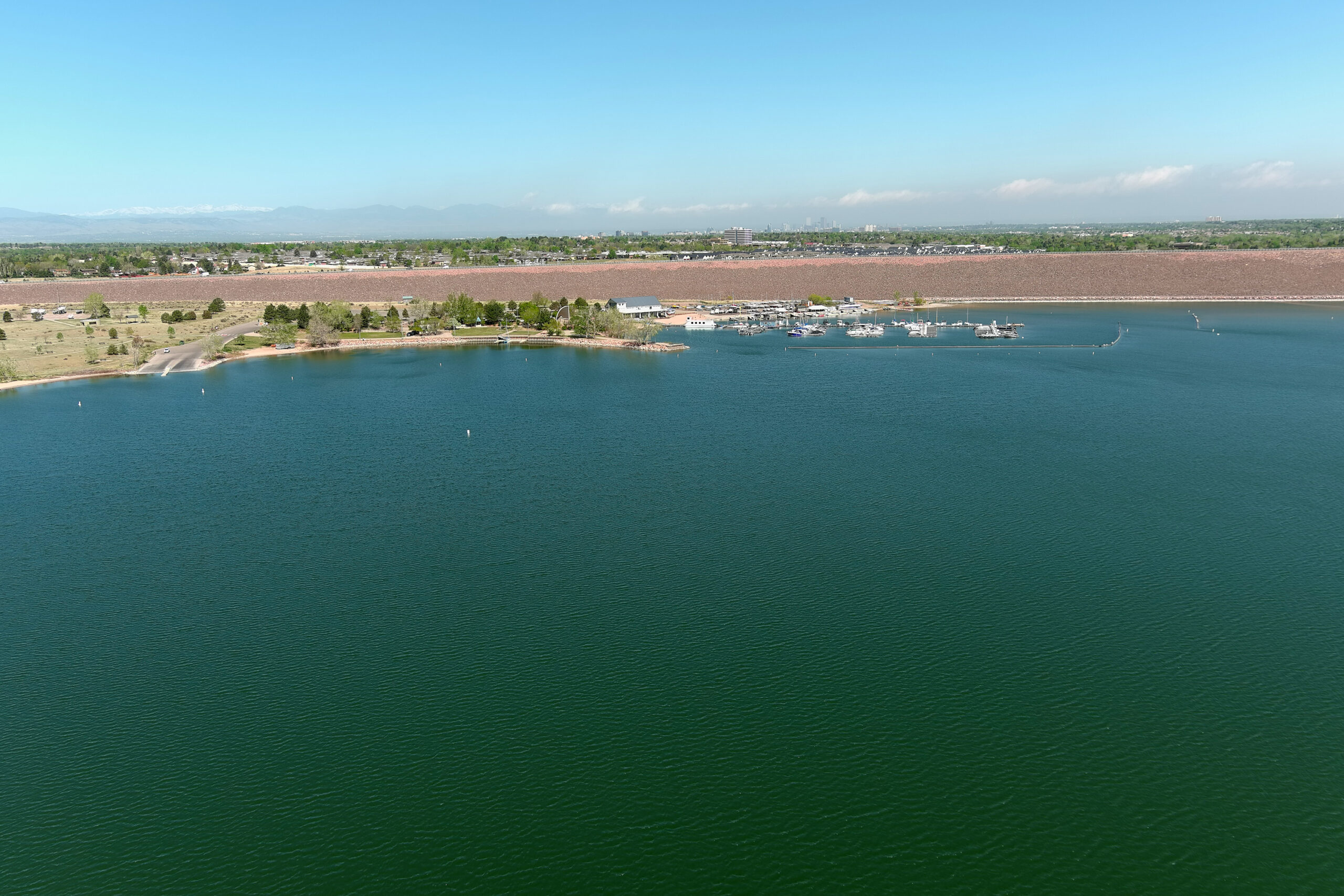
After an exhaustive search for a missing party, Cherry Creek State Park will re-open to boating Friday
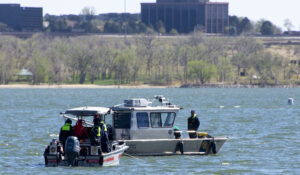
AURORA, Colo. – The recovery operation in the search for the missing 29-year-old male victim in the reservoir at Cherry Creek State Park continues. The reservoir will re-open to boating on Friday at 6 a.m.
Colorado Parks and Wildlife, South Metro Fire Rescue, Summit County Sheriff’s Office, Arapahoe County Sheriff’s Office and volunteers from Tightline Outdoors participated in the five-day recovery operation while the reservoir was closed. They utilized specialized underwater equipment, drones and personnel to search and support Cherry Creek State Park.
During the six-day closure everyone involved maximized technology and personal resources to the fullest. The reservoir bottom has been thoroughly searched with specialized equipment to the extent they were designed for. CPW will continue searching difficult areas with an underwater drone that is not impacted by lake traffic and will continue to search shorelines and utilize equipment on daily patrols.
Now that the specialized equipment has been provided a search environment without boaters and has been maximized to the fullest extent, CPW will re-open the lake. CPW will maintain an investigation into all possibilities regarding the report of the missing victim.
CPW sincerely thanks all participants for their dedication and continued time with the search. The goal has been and will continue to be to bring closure for all impacted by this tragic event.
If you have any information regarding this incident please contact CPW’s Denver office at 303-291-7227.
Stay up to date on the latest in the search and the status of the reservoir as it pertains to boating by following CPW’s Northeast Region Twitter account,@CPW_NE.
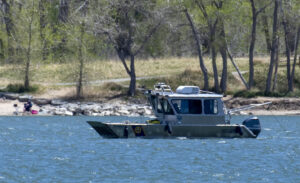
-

Heat dome to bring return of triple-digit temps to Southwest
Temperatures will begin to ramp up across the Southwest and South Central states starting on Sunday. Cities including Phoenix, where temperatures did not make it out of the 80s on Wednesday, will soar into triple digits by Saturday. Even Flagstaff, Arizona, a city located at an elevation of about 7,000 feet, will experience high temperatures 15-20 degrees above normal by Saturday.
AccuWeather Global Weather Center – May 12, 2022 – AccuWeather forecasters say the Southwest is about to embark on a temperature roller-coaster ride as temperatures soar 10-20 degrees Fahrenheit above normal for many locations in the coming days.
So far this week, a large swath of the southwestern United States has encountered unseasonably cool conditions, largely due to a deep southward dip in the jet stream. Places such as Death Valley, California, and Las Vegas experienced high temperatures 10-15 F below average for several days early this week. On Wednesday, Death Valley managed to hit only 78 F which is 21 degrees lower than the city’s average high of 99 F. Cities such as Chicago and Colorado Springs, Colorado, were hotter this week.

The relief from the heat will be brief, according to forecasters. The atmospheric traffic jam that has been in place since last week, bringing record-breaking heat and violent severe thunderstorms to the Central states, unseasonable warmth to the East and an abnormal chill to the West, will finally start to clear out this upcoming weekend.

The jet stream will begin to shift northward early this weekend and will leave room for heat currently trapped south of the U.S. to make its way north.
“This shift in the jet stream will allow a ‘heat dome’ to build across the Southwest this weekend and into next week,” AccuWeather Senior Meteorologist Dan Pydynowski explained.
Heat dome to bring return of triple-digit temps to Southwest (Full Story) >>
-
Air Quality Health Advisory for Fine Particulates
Issued for the eastern plains of Colorado
Issued Wednesday May 11, 2022
Issued by the Colorado Department of Public Health and EnvironmentAffected Area: Logan, Sedgwick, Phillips, Morgan, Washington, Yuma, Elbert, Lincoln, Kit Carson, Cheyenne, Pueblo, Crowley, Otero, Kiowa, Bent, Prowers, Las Animas, Baca, and eastern portions of Weld, Adams, Arapahoe, El Paso, and Huerfano counties. Locations include, but are not limited to, Sterling, Julesburg, Holyoke, Fort Morgan, Akron, Wray, Kiowa, Hugo, Burlington, Cheyenne Wells, Pueblo, Ordway, La Junta, Eads, Las Animas, Lamar, Trinidad, Springfield, and Walsenburg.
Advisory in Effect: 9:00 AM MST, Wednesday, May 11, 2022 to 9:00 PM MST, Wednesday, May 11, 2022.
Public Health Recommendations: If significant concentrations of fine particulates are present and reducing visibility to less than 10 miles across a wide area, People with heart or lung disease, older adults, and children in the affected area should reduce prolonged or heavy indoor and outdoor exertion.
Outlook: Strong and gusty winds will produce areas of blowing dust on Wednesday. Areas of blowing dust will persist throughout the region during the late morning and afternoon hours. The threat for blowing dust will gradually diminish across the advisory area Wednesday evening. Additionally, smoke from out-of-state wildfires will be transported into the advisory area throughout the day on Wednesday.
For the latest Colorado statewide air quality conditions, forecasts, and advisories, visit:
http://www.colorado.gov/airquality/colorado_summary.aspx
Social Media:
http://www.facebook.com/cdphe.apcd http://twitter.com/#!/cdpheapcd
-
Dangerous winds, wildfire conditions returning to New Mexico
Editors Note UPDATES: Recasts, updates throughout with strong winds returning, hampering efforts to battle blaze, fresh quotes. Links additional AP Photos. With AP Photos.
By CEDAR ATTANASIO and BRIAN MELLEY
Associated Press
LAS VEGAS, N.M. (AP) _ After a few days of calm that allowed some families who had fled wildfires raging in northeast New Mexico to return to their homes, dangerous winds picked up again Sunday, threatening to spread spot fires and complicate work for firefighters.
More than 1,500 firefighters were on the fire lines at the biggest blaze east and northeast of Santa Fe, which grew another 8 square miles (20 square kilometers) overnight to an area more than twice as large as the city of Philadelphia.
A red-flag warning was in effect Sunday, kicking off what fire officials predicted would be another “historic, multi-day wind event that could result in extreme fire behavior.”
A few helicopters were able to gather new information from the air on the spread of the flames early Sunday “but they won’t be up there very long because of the winds out there,” fire spokesman Tom Abel said.
“The wind is incredible. It is precedent setting, the amount of wind we are going to have and the duration we are going to have it,” he said at a morning briefing.
“They are predicting the wind to blow all day today, through the night, all day tomorrow so that is a long time for our fire,” he said.
Thousands of residents have evacuated due to flames that have charred large swaths of the Sangre de Cristo Mountains in northeastern New Mexico _ a total of 275 square miles (712 square kilometers).
The good news, Abel said, is additional fire crews continue to arrive from around the West.
For many California firefighters backing up local units, the winds in New Mexico are puzzling. Unlike the sustained Santa Ana winds in southern California, the air around the Hermit’s Peak/Calf Canyon fires in New Mexico have swirled around and been redirected in complex and changing interactions with the mountains.
“We’ll see what happens,” said fire battalion chief Ryan Lewis, of Ontario, California, on a rare break with his firefighters at a local hotel that’s serving hot meals to fire workers and evacuees.
The worst of the thick wildfire smoke had blown out of some areas on Saturday, allowing residents of rural Las Vegas, New Mexico, to recapture a sense of normalcy Saturday as their rural neighbors hunkered down amid predictions of extreme fire conditions.
Shops and restaurants reopened, the historic center was no longer just populated by firefighters, but there was a widely felt sense of anxiety, loss, and wariness of what lay ahead.
“It’s literally like living under a dark cloud,” said Liz Birmingham, whose daughter had persistent headaches from the smoke. “It’s unnerving.”
Nationwide, close to 2,000 square miles (5,180 square kilometers) have burned so far this year, with 2018 being the last time this much fire had been reported at this point, according to the National Interagency Fire Center. And predictions for the rest of the spring do not bode well for the West, where long-term drought and warmer temperatures brought on by climate change have combined to worsen the threat of wildfire.
The New Mexico fire’s main threat was now to the north, where flames burning vegetation clogging the forest floor threatened several small rural communities, fire spokesman Ryan Berlin said.
The threat to Las Vegas, a city of 13,000, was reduced after vegetation was cleared to create containment lines. Local officials on Saturday allowed residents of several areas on the city’s northwestern outskirts to return to their homes, Berlin said.
The city looked like a ghost town earlier in the week, with businesses shuttered, schools closed and the tourist district empty but for resting firefighters. By Saturday, it was in a partial state of recovery.
National Guard troops carried cases of water, people lined up to sign up for relief from the Federal Emergency Management Agency and the state’s Democratic U.S. Sen. Martin Heinrich met with local officials and toured the shelter housing some of the displaced.
“We don’t know if our houses are getting burned, or if it’s gonna stop,” said Domingo Martinez, an evacuee from rural Manuelitas northwest of Las Vegas. “I hope it dies down so we can go home.”
Martinez, who is staying with his son on the east side of town, visited an old friend and neighbor who had been living in the middle school shelter for 15 days.
Outside the school, Martinez got a free haircut from Jessica Aragon, a local hairdresser who volunteered her time.
“I love that everyone is coming together,” Aragon said. “I think a smile is worth a thousand words.”
___
Melley reported from Los Angeles. Associated Press writers Susan Montoya Bryan, Felicia Fonseca in Flagstaff, Arizona, and Paul Davenport and Michelle A. Monroe in Phoenix contributed to this report.